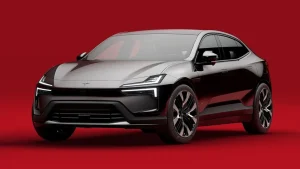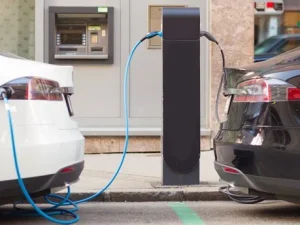Switching to an electric vehicle (EV) isn’t just about reducing your carbon footprint; it’s also a smart financial move. With a variety of tax credits and rebates available, you can make a significant dent in the cost of your new eco-friendly ride. But how do you maximize these benefits? Let’s take a deep dive into the world of EV incentives and explore how you can get the most bang for your buck.
Introduction
The shift towards electric vehicles is more than a trend—it’s a movement. Governments worldwide are encouraging this transition through various incentives aimed at reducing greenhouse gas emissions and promoting sustainable transportation. For consumers, this means not only contributing to a healthier planet but also enjoying substantial financial perks.
In this guide, we’ll break down everything you need to know about electric car tax credits and rebates. You’ll learn about the different types of incentives available, how to qualify for them, and strategies to maximize your savings. Whether you’re a first-time car buyer, part of a low-income household, or a business owner, there’s something here for everyone.
Understanding Electric Car Tax Credits and Rebates
Federal Tax Credits
One of the most significant incentives for purchasing an electric vehicle in the United States is the federal tax credit. This credit can be worth up to $7,500, depending on the make and model of the vehicle. The amount is determined by the size of the battery and the vehicle’s overall efficiency. To qualify, the car must be purchased new and be used primarily in the United States.
State Tax Credits and Rebates
In addition to federal incentives, many states offer their own tax credits and rebates. These can vary widely, with some states offering thousands of dollars in additional savings. For example, California’s Clean Vehicle Rebate Project (CVRP) provides up to $4,500 for eligible consumers. It’s crucial to check your state’s specific programs, as they can significantly enhance your savings.
Eligibility Criteria
To claim these incentives, you’ll need to meet specific eligibility criteria. Generally, the vehicle must be new, purchased for personal use, and not exceed a certain price threshold. Additionally, some state and federal incentives have income caps, meaning higher earners might receive reduced benefits or none at all. Always read the fine print to ensure you’re fully eligible.
Making the Most of Available Incentives
For First-Time Car Buyers
If you’re a first-time car buyer, you’re in an excellent position to maximize your savings. Many states offer additional incentives for new buyers, and you may also qualify for federal tax credits. Research thoroughly and consult with a financial planner to ensure you’re taking advantage of every available benefit.
For Low-Income Households
Low-income households can also benefit significantly from EV incentives. Some states offer additional rebates aimed explicitly at making electric vehicles more accessible to lower-income families. For example, California provides extra rebates for low-income applicants under the CVRP. Combining these with federal tax credits can make owning an electric vehicle affordable.
For Businesses
Businesses can also reap substantial benefits from investing in electric vehicles. Apart from federal and state tax credits, there are often additional incentives for commercial fleets. These can include grants, low-interest loans, and even rebates for installing electric vehicle charging stations. By transitioning to an electric fleet, businesses not only save on fuel costs but also demonstrate a commitment to sustainability.
The Future of Electric Vehicle Incentives
Potential Changes at the Federal Level
The landscape of EV incentives is continually evolving. The federal government is considering various changes to existing programs to make them more accessible and beneficial. This could include increasing the cap on the number of vehicles that qualify for the credit or extending the credit to used electric vehicles. Staying informed about these changes can help you plan your purchase strategically.
State-Level Policy Shifts
States are also updating their policies to encourage more widespread adoption of electric vehicles. Some states are introducing new rebates, while others are enhancing existing programs. For instance, New York recently launched a Drive Clean Rebate Program that offers up to $2,000 for eligible electric vehicles. Keep an eye on your state’s legislation to make the most of these opportunities.
Impact on Consumers and the EV Market
These policy shifts have a significant impact on both consumers and the broader EV market. More generous incentives can make electric vehicles more affordable, thereby increasing demand. This, in turn, can drive down prices through economies of scale and make EVs a viable option for a larger segment of the population. For consumers, staying updated on these changes is crucial for maximizing savings and making informed purchasing decisions.
Case Studies and Real-World Examples
Successful Individual Buyers
Take Jane, a school teacher from California, who successfully leveraged multiple incentives to purchase her first electric vehicle. By combining federal tax credits with state rebates, Jane saved over $10,000 on her new car. She also took advantage of a local utility company’s rebate for installing a home charging station, further reducing her overall costs.
Business Adoption
Then there’s GreenRides, a rideshare company that transitioned to an all-electric fleet. By utilizing federal tax credits, state grants, and incentives for commercial fleets, GreenRides significantly reduced their operational costs. They also benefitted from lower fuel costs and maintenance expenses, proving that going green can be good for business.
Community Initiatives
Community initiatives can also play a crucial role. In Denver, a community-driven program offers additional rebates for residents in specific neighborhoods, ensuring that everyone has the opportunity to switch to cleaner transportation. These initiatives not only make EVs more accessible but also foster a sense of community and shared responsibility.
Conclusion
Switching to an electric vehicle comes with a myriad of environmental and financial benefits. By understanding and leveraging the various tax credits and rebates available, you can make a significant impact on your wallet and the planet. From federal tax credits to state rebates and community initiatives, there are numerous ways to maximize your savings.
Whether you’re a first-time buyer, part of a low-income household, or a business owner, there’s an incentive program tailored to your needs. Stay informed about potential changes in policies, and don’t hesitate to consult with financial planners to optimize your benefits.
Ready to make the switch? Explore your options, maximize your incentives, and join the growing community of eco-conscious drivers. Share this post with others who might benefit and engage with us to learn more about sustainable transportation choices.



